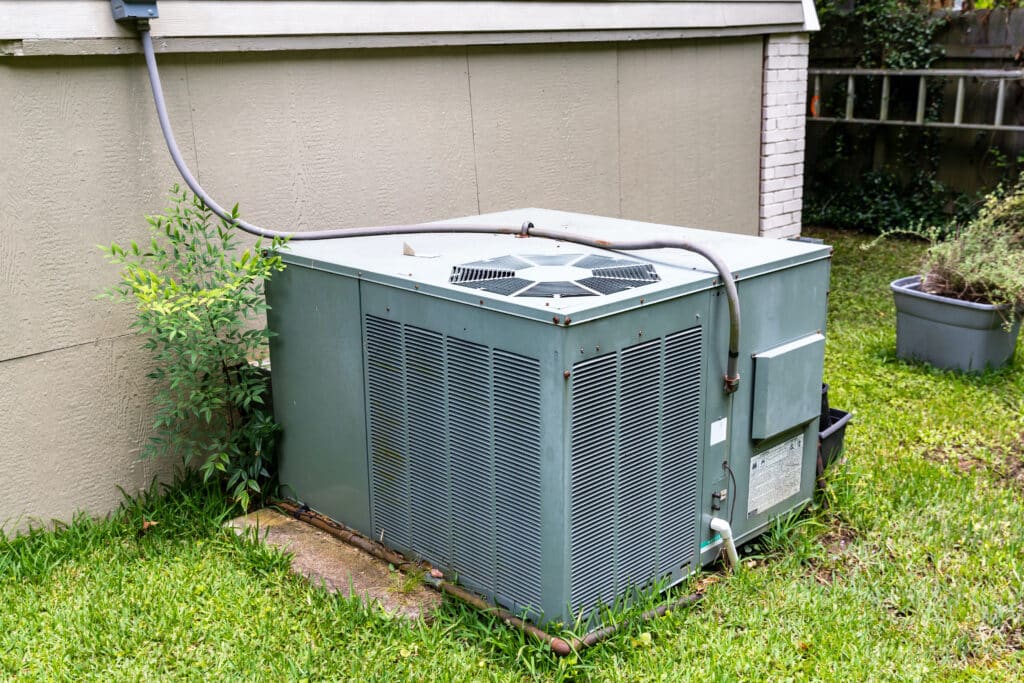
Whether you’re remodeling your home, upgrading your HVAC system, or just want to know more about your current heating system, you’ll likely come across the term forced-air heating. In fact, this is the most common type of heating for North American homeowners.
This guide uses plain language to explain what forced-air heating is and how it works, including key components such as the furnace, boiler, radiant, and heat pump. We’ll also review its pros and cons so you can determine if this is the right heating system for your home.
What Is Forced-Air Heating?
Forced-air heating is a type of heating, ventilation, and air conditioning (HVAC) system. It uses a heat source powered by electricity, natural gas, or propane to increase the air’s temperature. That air is then pushed throughout the home via fans and a duct system.
How a Forced-Air Heating System Works
Forced-air heating systems use a series of complicated but carefully designed components. Some parts of the heating process happen simultaneously, while others occur in a series.
Below, we’ve broken down how forced-air heating works with a heat pump. Forced-air heating systems without a heat pump don’t require fresh air intake, which are specialized vents that run ducts from your home’s exterior to its interior.
Some forced-air heating systems also use an electric furnace, which starts up quieter and eliminates a carbon monoxide risk. However, gas furnaces are older and more common. Electricity is also more expensive than gas, making gas furnaces cheaper to run even though electric ones are more efficient.
Here’s how a forced-air heating system with a gas furnace heats your home:
- The thermostat sends an electrical signal to the furnace that you want heat.
- The furnace starts an inducer motor to exhaust any leftover gasses from the previous cycle.
- A pressure switch performs a brief safety check.
- The heat source ignites through one of three ignitions: a surface igniter, standing pilot, or spark ignition. Electric systems typically use spark or surface ignitions, which only use energy when your water heater, burner, boiler, or other appliances need heat input. Standing pilots, which are small flames that continuously burn, are found in gas furnaces.
- The heat exchanger heats the air in the plenum, a box that connects the HVAC system to your home’s ductwork.
- Blower fans engage and force the warm air into the supply ducts for distribution while creating suction in the return ducts to pull in recycled air.
- Air is also pulled in through a fresh air intake to replace cool air forced from the house.
- When the thermostat determines that the indoor air meets a set temperature, it sends a signal to shut down the system. The system then turns off and stands by until the next cycle.
Pros and Cons of Forced-Air Heating
Forced-air is the most popular heating system because it’s cost-effective and can use the same ductwork as your air conditioning system. Other heating systems, such as a heat pump or a radiator distribution system such as a boiler, are not as popular because they’re expensive to install and maintain.
| Pros | Cons |
|---|---|
| Heats your home faster than other types of heating systems | Noisier than other system types |
| Highly energy-efficient and cost-effective | Requires centralized temperature control |
| Highly durable and lasts up to 30 years | Can cause mold and allergens if not properly maintained |
Forced-Air Heating System Maintenance
Maintaining a forced-air furnace is relatively simple. While these steps may seem small, it’s important to follow them to ensure your HVAC system runs properly.
- Change the air filter monthly or quarterly.
- Have your central heating system inspected annually.
- Clean the supply and return air ducts annually.
- Keep all air conditioner components clear of clutter and obstructions.
- Keep the thermostat batteries charged.
- Maintain carbon monoxide detectors.
- Monitor your energy bills to catch any energy-use spikes.
Contact a Professional
You can attempt to repair your forced-air heating system on your own, but it isn’t advisable. These systems have many complicated, expensive components, and it’s best to let an HVAC professional handle them. Even if your system is working, you should have it serviced annually to preserve longevity and ensure your home is being heated safely and efficiently.
Frequently Asked Questions About Forced-Air Heating
When to Consider a Broader Home Inspection
When purchasing or selling a home, it is critical to complete a thorough inspection to understand the condition of the property. A standard home inspection includes an assessment of a home’s systems and physical structure. After the process, the inspector will provide a report detailing their findings and recommendations.
If you are thinking about buying a home or putting your home on the market, we strongly recommend finding an ASHI home inspector in your area.

